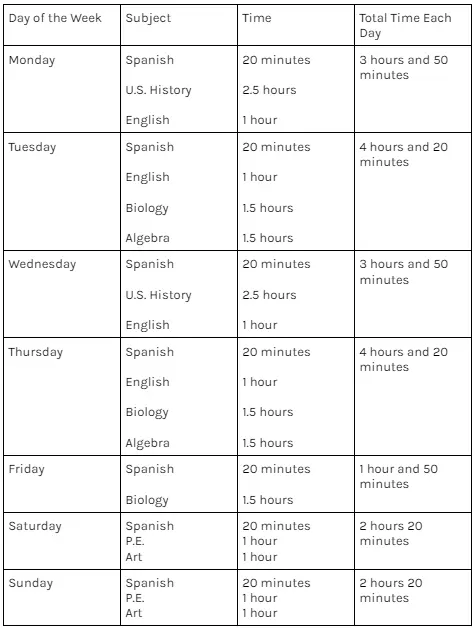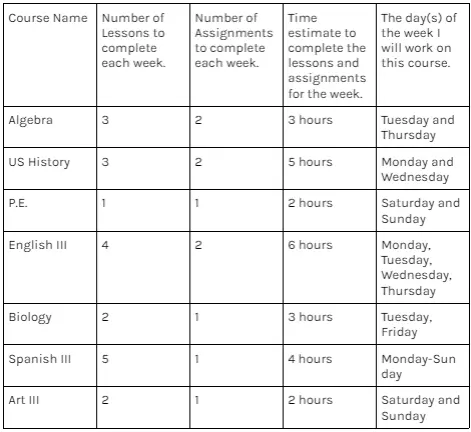Written by Elizabeth Contreras, High School Social Studies Teacher
Online school can take many forms, from synchronous to asynchronous. Asynchronous online schools are ideal for students who have outside activities that prevent them from being able to sit in a classroom or attend regular synchronous virtual class meetings. Asynchronous, self-paced online schools that offer flexible work schedules are ideal for students pursuing their passions beyond the classroom walls. This form of online learning allows students to engage with coursework at a time and place that is convenient to them. It also allows students to take charge of their learning. It is thus an empowering approach to education that helps foster self-discipline and drive in students.
However, it has its challenges. Because self-paced, asynchronous online learning lacks due dates or hard deadlines, it can be easy to procrastinate coursework, allowing it to build, which can cause students to fall behind. Since most asynchronous, self-paced models begin and end at set dates, students must complete coursework in a set time frame. While this model offers flexibility, there is one hard deadline: the course’s end date. Because of the flexibility of self-paced learning, students can fall into the trap of procrastination, allowing coursework to pile up to the extent that students cannot complete the course by the set end date. This reality can be incredibly frustrating and cause students to disengage from learning, resulting in stress, anxiety, and, ultimately, the inability to finish the course. Thankfully, some solutions can help remedy the curse of procrastination and the downfall of allowing the flexibility of self-paced online learning to become a trap.
How to Combat Procrastination, Prioritize Coursework, and Stay on Track
Step 1: Assess the timeframe
Often, students enroll in self-paced online school because they cannot devote eight hours to schoolwork each day (or, they don’t want to be confined to the classroom!). If a student only has four hours a day in the evenings or ten hours sprinkled throughout the week, the first step is determining how many hours each day and week the student can devote to their coursework. Once that is determined, the student can create an effective pacing schedule.
Creating a pacing schedule
The next step is to develop a pacing schedule.
- To do this, first, see how many courses the student is enrolled in that semester.
- The second step is determining how many lessons and assignments are in each course and any additional readings associated with each lesson/assignment.
- In many online schools, students can find the lessons and assignments they will be required to complete by looking at a syllabus, course schedule/guide or by going into their grade book.
- Once the number of lessons and assignments for the course has been determined, the next step is to divide that number by the number of weeks the student has to complete the course.
- For example, imagine a student is taking a U.S. History course. It has 50 lessons (each with associated textbook readings) and 30 assignments. The student has 20 weeks to complete the course. They will divide 50 by 20, and then 30 by 20.
- Based on these calculations, they would have to complete between 2-3 weekly lessons and 1-2 assignments.
- For example, imagine a student is taking a U.S. History course. It has 50 lessons (each with associated textbook readings) and 30 assignments. The student has 20 weeks to complete the course. They will divide 50 by 20, and then 30 by 20.
- Once the number of lessons and assignments for the course has been determined, the next step is to divide that number by the number of weeks the student has to complete the course.
- This chart is an example of a pacing schedule for an 11th-grader taking 5 courses:
- In many online schools, students can find the lessons and assignments they will be required to complete by looking at a syllabus, course schedule/guide or by going into their grade book.
Step 2: Prioritizing coursework
Once the overall schedule is complete, the next step is prioritizing the coursework order. A good rule of thumb is to complete the least favorite or most challenging courses first. By tackling what is challenging or the least enjoyable first, students will be more likely to complete everything on their to-do list that day. If students complete what they like first, they are more likely to procrastinate on the less enjoyable or more challenging courses, which may put them off to the point of falling behind.
To do this, rank courses from most challenging to least challenging and most enjoyable to least enjoyable.
Here is an example of the ranking for the sample student:
Now that the student has organized their courses by interest, the next step is creating a daily schedule.
Using this series of calculations, students can easily see how much time they need to spend each day on their schoolwork. The specifics will be unique to each student. However, the key is to sit down at the beginning of the course and make the necessary calculations.
Staying on Track
The most challenging part of pacing schedules is sticking to them. Printing out the weekly schedule and placing it in a prominent place is helpful. The key, however, is consistency. To stay on pace, students need to stick to the pacing schedule they created. Do a little bit of work each day and tackle the weeks as they come. Otherwise, online learning can become overwhelming.
By making a pacing schedule at the beginning of the course, staying on track is much easier. Although it may take some time at the beginning to do the math and formulate a pacing schedule, it will save time throughout the school year since it will help streamline school work. By crafting and sticking to an effective schedule, students are better able to engage in coursework and outside of school activities meaningfully, leading to a successful school year.









